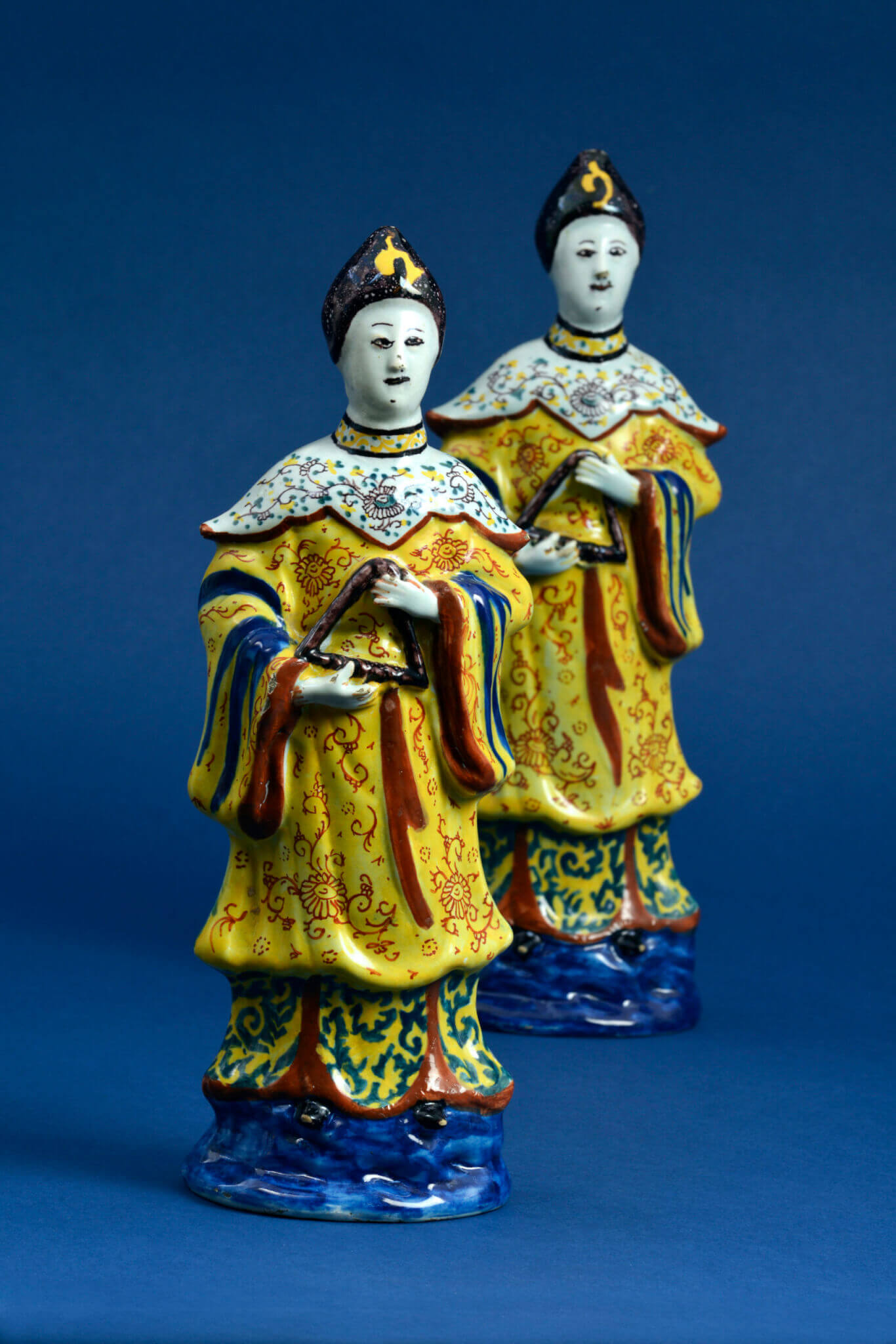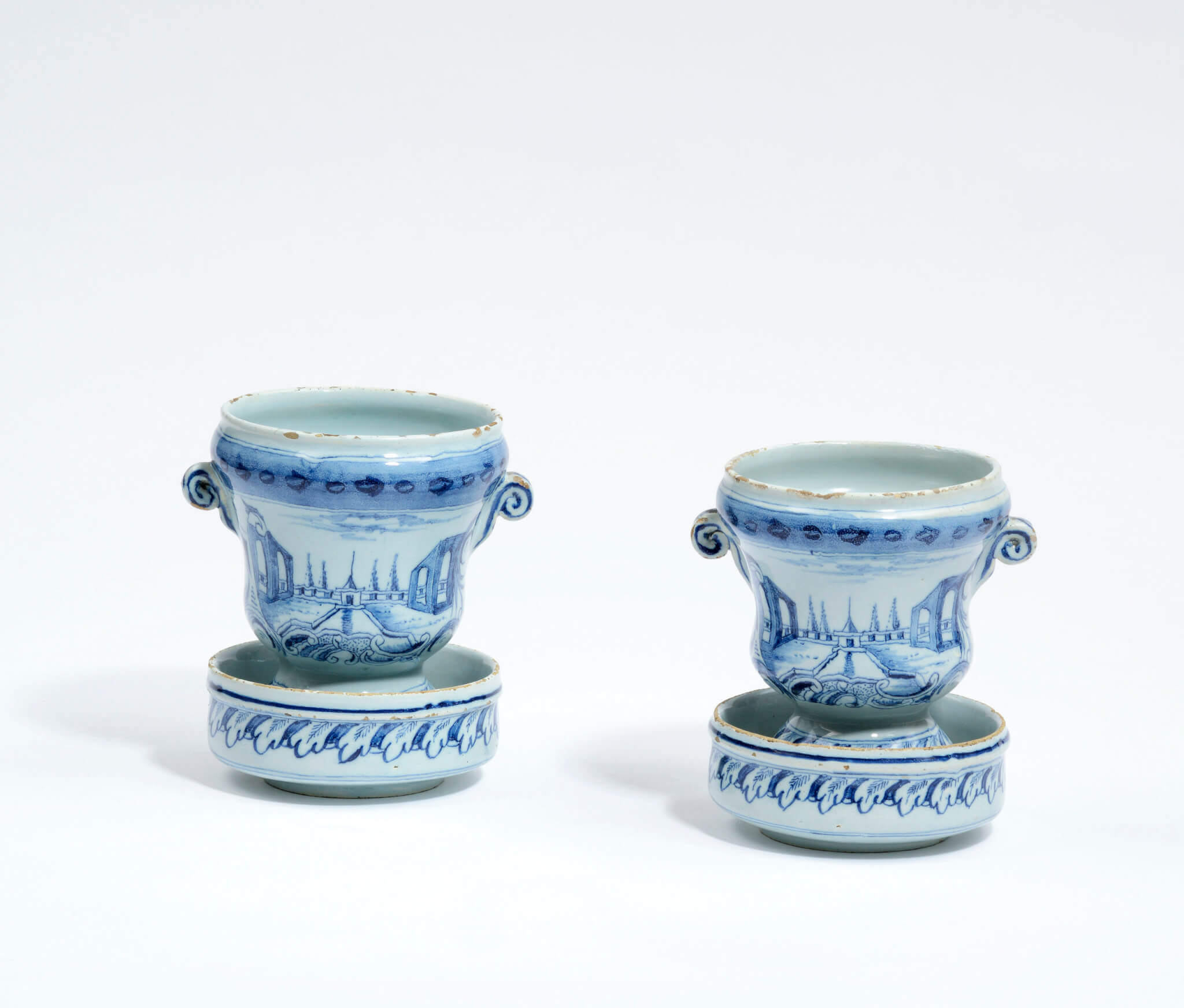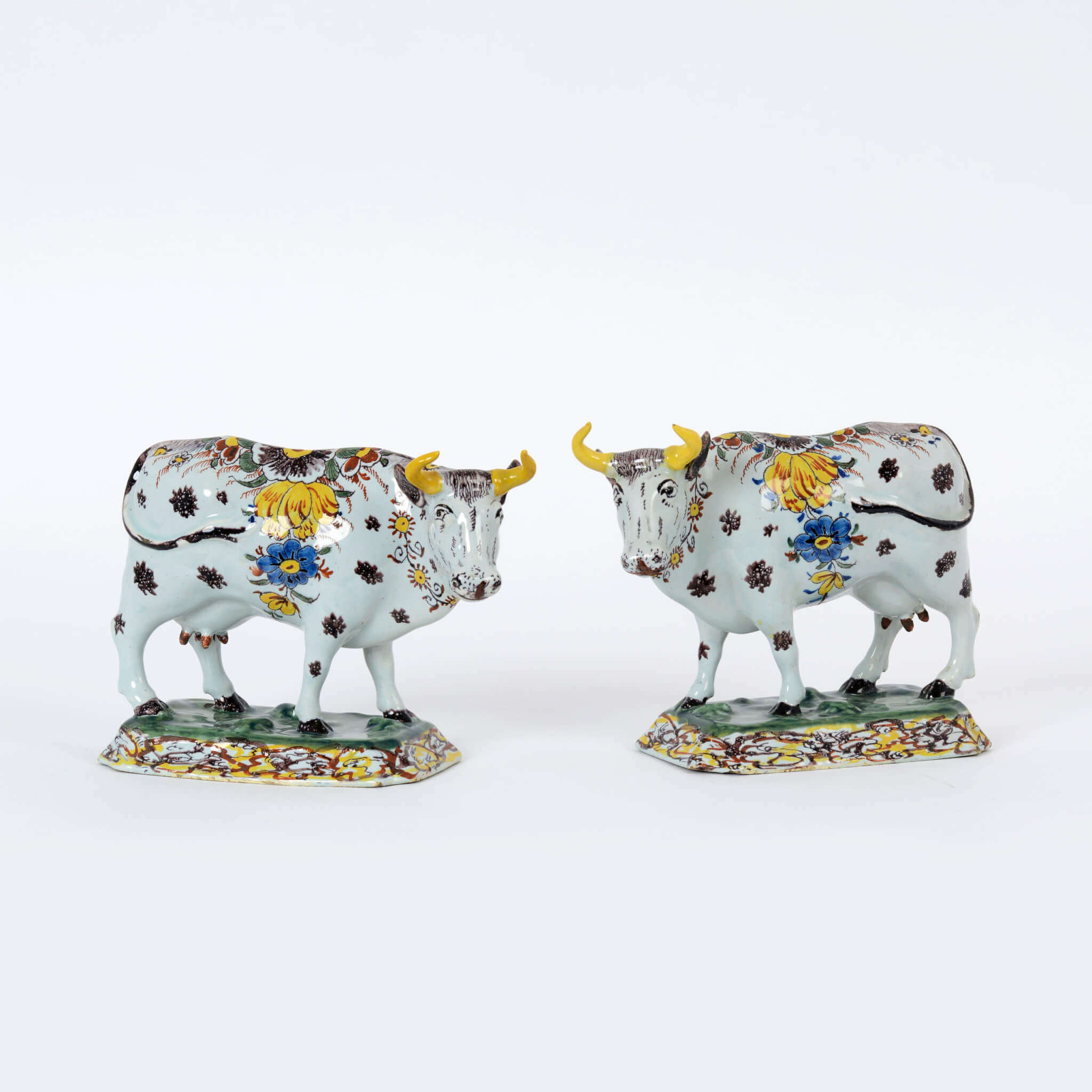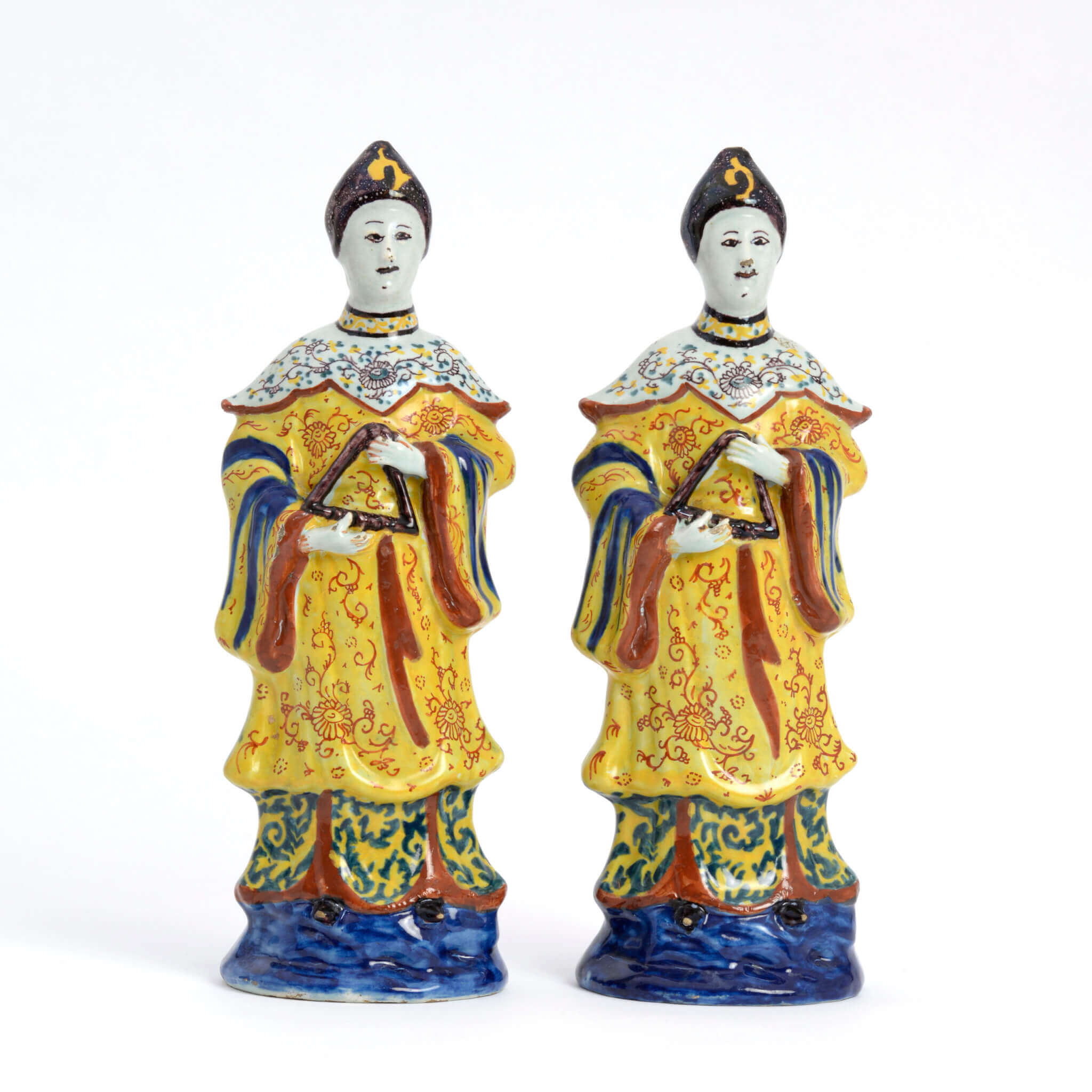
De Porceleyne Lampetkan (The Porcelain Ewer) Factory
The history of De Lampetkan, or De Porceleyne Lampetkan factory began in 1609, when Abraham Davidsz. Oosterhouck bought a house called ‘De Burcht van Leyden’ that he transformed into a pottery.1 The factory changed hands many times throughout the seventeenth century. Oosterhouck owned the factory until 1619, and then sold it to Cornelis Harmesz. Valckenhoff, whose widow Ermpje Cornelisdr. was in charge until 1649. She then sold the factory to Claas Jansz. van Straten, the former master potter for De Porceleyne Schotel (The Porcelain Dish) factory. Van Straten owned De Lampetkan until his death in 1653.2 His widow, Adriaantje, remarried, and likely managed both De Lampetkan and her son-in-law’s pottery, Het Moriaanshooft, since even after 1664, when Jacob Wemmersz. Hoppesteijn had bought out everyone else who had an interest, it was explicitly stipulated that the business was leased to his mother-in-law for another three years. Eventually, her son Jan succeeded her in De Lampetkan and her daughter Jannetje in Het Moriaanshooft.3 Jan Claasz van Straten sold the factory in 1703 to Isaac van der Voorn, whose widow Catharina Jansdr. Boude later ran the factory from 1709 until 1717, after which it was owned by Johannes van der Voorn until 1723.
 The business later flourished under the management of the Van der Ceel family, who were prominent in the Delftware industry. Abraham van der Ceel purchased the factory in 1723, and trained his son Maarten who became master in 1739. After his death, his wife inherited the factory and remarried Gerardus Brouwer in 1755.4
The business later flourished under the management of the Van der Ceel family, who were prominent in the Delftware industry. Abraham van der Ceel purchased the factory in 1723, and trained his son Maarten who became master in 1739. After his death, his wife inherited the factory and remarried Gerardus Brouwer in 1755.4
There are many pieces marked by De Lampetkan factory known today, including garnitures, jars, elegant tablewares and flowerpots, for example this pair of blue and white jardinières and stands from circa 1780. The flowerpots are decorated with a formal garden with topiary arbors along a pool before a pavilion and trees in the background. In the second half of the seventeenth century, many of the wealthy urban bourgeoisie built country residences (Buitenplaatsen) landscaped with beautiful Dutch baroque gardens along the Amstel, Spaarne and Vecht Rivers. The classical designs of these Dutch gardens reflected the influence of the architecturally disciplined plans of French gardens. Characteristic of the Dutch gardens was a central allée that ended on the central axis of the estate. The design of this allée formed a unity with the garden. Often, garden vases, jardinières or flower pots were used to decorate the gardens. Delftware flowerpots, such as this pair, are rare due to their limited production. In serving their function, the porous clay and glaze were subject to disintegration from both the minerals in the soil and the necessary watering of the plants within.
 Also, the characteristic Delftware cows were produced at De Lampetkan, such as this pair of cows from circa 1765. The cows, each with a manganese-spotted hide, are wearing the typical garlands of iron-red, yellow, blue and manganese flowers and green leaves around their neck and back. These flower wreathes are related to those that adorned the seventeenth-century ‘guild oxen’. Each year on the day of its patron saint (St. Luke, whose attribute is the apocalyptic beast, the winged ox), the Butcher’s Guild would hold a parade celebrating the best-bred bull or cow from their guild. The beast would be decorated with floral wreaths and ribbons, its horns often gilded and sometimes tipped with oranges; and the festive procession was joined by musicians. The meat of that animal was intended for the subsequent guild dinner, and a portion of it was donated to the church and the poor. The expression “the guild-ox is on parade” became synonymous with “this is a feast.” The intriguing figure of a little frog or toad molded in the relief on the base of these groups appears on many of the various Delft models of cows, and it remains an elusive element. It may refer, without any particular meaning, to the famous painting from 1647 by Paulus Potter (1625-1654) of ‘De Stier’ or ‘The Young Bull’ (in the Mauritshuis, The Hague, inv. no. 136), in which Potter painted a frog or toad in the foreground. Alternatively, because the toad can be interpreted as an allegory of death, its inclusion on these bovine models perhaps emphasizes the probable brevity of this domestic beast’s useful life.
Also, the characteristic Delftware cows were produced at De Lampetkan, such as this pair of cows from circa 1765. The cows, each with a manganese-spotted hide, are wearing the typical garlands of iron-red, yellow, blue and manganese flowers and green leaves around their neck and back. These flower wreathes are related to those that adorned the seventeenth-century ‘guild oxen’. Each year on the day of its patron saint (St. Luke, whose attribute is the apocalyptic beast, the winged ox), the Butcher’s Guild would hold a parade celebrating the best-bred bull or cow from their guild. The beast would be decorated with floral wreaths and ribbons, its horns often gilded and sometimes tipped with oranges; and the festive procession was joined by musicians. The meat of that animal was intended for the subsequent guild dinner, and a portion of it was donated to the church and the poor. The expression “the guild-ox is on parade” became synonymous with “this is a feast.” The intriguing figure of a little frog or toad molded in the relief on the base of these groups appears on many of the various Delft models of cows, and it remains an elusive element. It may refer, without any particular meaning, to the famous painting from 1647 by Paulus Potter (1625-1654) of ‘De Stier’ or ‘The Young Bull’ (in the Mauritshuis, The Hague, inv. no. 136), in which Potter painted a frog or toad in the foreground. Alternatively, because the toad can be interpreted as an allegory of death, its inclusion on these bovine models perhaps emphasizes the probable brevity of this domestic beast’s useful life.
 Human figures were also a large output of De Lampetkan around 1760. Although the objects from the second half of the eighteenth century are mainly inspired by Western daily life, these two figures of oriental ladies show the influences of the Far East. As most Delft chinoiserie figures are faithful copies of their Chinese counterparts, it is likely that the potters made molds directly from the originals. Some of the Delft chinoiserie figures were altered in shape from their Chinese prototype with the addition of various details, for example, the musical instruments of the present ladies. However, even when the exact shape was emulated, the Delft potters made these figures their own by decorating them with elaborate patterns. Not hindered by the Chinese mythological meaning of the figures, of which they were unaware, the Delft artists were free to decorate the figures as exotically as they pleased. This mixture of Eastern and Western stylistic elements for both the decoration and shape is referred to as chinoiserie. The style for chinoiserie continued into the rococo period, and these Chinese female musicians are wonderful examples of Delft figures modeled after mid-eighteenth-century Chinese export porcelain models from the Qianlong period (1736-1795).
Human figures were also a large output of De Lampetkan around 1760. Although the objects from the second half of the eighteenth century are mainly inspired by Western daily life, these two figures of oriental ladies show the influences of the Far East. As most Delft chinoiserie figures are faithful copies of their Chinese counterparts, it is likely that the potters made molds directly from the originals. Some of the Delft chinoiserie figures were altered in shape from their Chinese prototype with the addition of various details, for example, the musical instruments of the present ladies. However, even when the exact shape was emulated, the Delft potters made these figures their own by decorating them with elaborate patterns. Not hindered by the Chinese mythological meaning of the figures, of which they were unaware, the Delft artists were free to decorate the figures as exotically as they pleased. This mixture of Eastern and Western stylistic elements for both the decoration and shape is referred to as chinoiserie. The style for chinoiserie continued into the rococo period, and these Chinese female musicians are wonderful examples of Delft figures modeled after mid-eighteenth-century Chinese export porcelain models from the Qianlong period (1736-1795).
The production of De Lampetkan in the second half of the eighteenth century was extensive and the business prospered; in 1774, Abraham van der Ceel, the son of Maria Van der Hagen and Maarten van der Ceel bought a quarter of De Paauw mill and in 1784 a clay washery, making them less dependent on intermediaries.5 The factory stayed in the family until 1811, when the widow of Abraham van der Ceel, Geertruida Viervant, sold it.
Notes
1 W. Hoekstra-Klein, Geschiedenis van de Delftse Plateelbakkerijen, De Porceleyne Lampetkan, 1609-1811, Vol. 11, Delft 2005, p. 159
2 J.D. van Dam, Delffse Porceleyne, Dutch Delftware 1620-1850, Zwolle, (Rijksmuseum Amsterdam) 2004, p. 66
3 Idem
4 M.S. van Aken-Fehmers, L.A. Schledorn, T.M. Eliëns, Delfts aardewerk. Geschiedenis van een nationaal product, Volume II, Zwolle (Gemeentemuseum, The Hague) 2001, p. 83
5 Hoekstra-Klein 2005, p. 160



